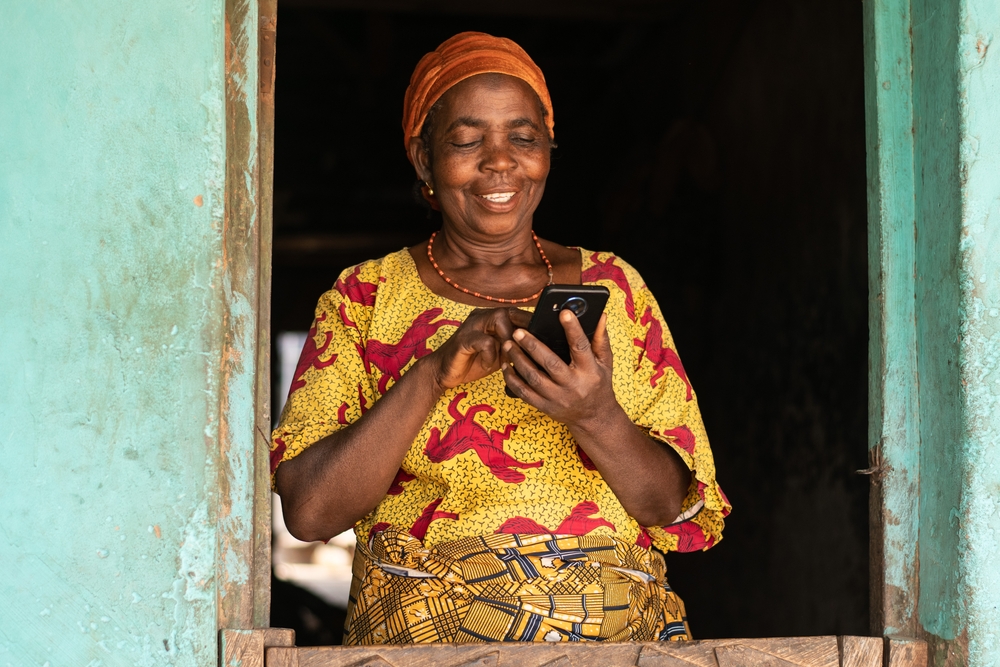
Depression is a major public health problem, affecting hundreds of millions of people across the globe. The personal suffering of patients and their families is enormous and the economic costs associated with depression are vast. There are effective treatments, but they do not always work. Most people suffering from depression do not respond to the first treatment they get. On the population level, current treatments can only reduce the disease burden of depression by about one third, even in optimal conditions where everyone with depression receives an evidence-based treatment (Andrews et al., 2004).
If we want to reduce the burden of depression at the population level, there are three possibilities.
- One is to prevent depression altogether.
- The second is to make treatments more effective.
- And the third is to increase the uptake of treatment.
In this blog, I will focus on if and how digital interventions can improve the uptake of treatments for depression. I have also presented this information in a webinar that you can watch below. You can also catch up on all of blogs and webinars in #DepressionSolvingTheToll series.
Improving the uptake of therapies for depression
The uptake of psychological treatments overall is low. It has been estimated that the uptake is 28% in high income countries, but only 7% in low-income countries (Chisholm et al., 2016) and is also lower in several age and target groups, such as adolescents, young adults, older adults, minority groups and groups with lower socioeconomic status. It is important, therefore, to develop methods to increase the uptake of effective psychological interventions, especially in low- and middle-income countries (LMICs) where most people with mental health problems do not have access to evidence-based interventions at all.
We conducted a large network meta-analysis with more than 330 randomised trials examining 8 major types of therapy and found these had comparable effects (Cuijpers et al., 2021). This raises the question:
- What is the most basic form of a therapy needed to be effective?
- Can we minimise interventions without reducing their effects?
In recent years, several methods have been developed to increase uptake and minimise interventions, without losing effectiveness. One method is to deliver therapies through lay-health counsellors. This solves a major barrier to improving access to psychological interventions; the lack of skilled mental health practitioners (Karyotaki et al., 2022). Another option to increase uptake is to use single-session interventions (Schleider et al., 2018), which have a lower threshold for participation and drop-out is not an issue in such interventions.
The uptake of psychological treatments can also be improved by using digital interventions. Most of these interventions deliver (guided) self-help through an internet program, or an app. A self-help intervention can be defined as a psychological treatment in which the patient takes home a standardised psychological treatment protocol and works through it independently (Cuijpers & Schuurmans, 2007). This standardised psychological treatment protocol can be available through a website or an app, but it can also be written down in book form or any other form. In guided self-help there is a clinician or coach to support or facilitate the user to work through the materials, via email, texts, or any other method of communication.

Globally, uptake of psychological treatments is low, so we need to consider what is the most basic form of therapy we need to effectively treat depression.
Are digital interventions for depression effective?
We conducted a large network meta-analysis of 155 randomised trials with 15,191 participants who received cognitive behaviour therapy (CBT) and included trials examining CBT in an individual, group, telephone, guided self-help (mostly digital) and unguided self-help (Cuijpers et al., 2019). The results showed that there were no significant differences between treatment formats, if there was any human contact. So all treatment formats had comparable outcomes, except unguided interventions, which were significantly less effective. In an ‘individual participant data’ (IPD network meta-analyses) we found that guided and unguided interventions had comparable effects in milder depression and guided interventions were only more effective in more severe depression (Karyotaki et al., 2021). In another meta-analysis it was found that this is also true for CBT in panic disorder (Papola et al., 2023).
The overall conclusion of this research is that guided digital interventions have comparable effects as face-to-face therapies and that unguided interventions are also effective, but less than guided ones. This means that digital interventions are in principle effective, and this knowledge can be applied in any area of health care, including preventive services, primary care, specialised mental health care, general medical care, and perinatal care, but also in the work setting or at schools and universities. Digital interventions can also be used in virtual clinics without any physical building. The effects of digital interventions are currently examined extensively in each of these areas and goes beyond the scope of this blog to describe all these developments. Therefore, I will focus now on one specific area where digital interventions can be especially important: global mental health.

Guided digital interventions are just as effective as face-to-face therapies, but have much greater potential to reach people currently not getting the help they need.
Global mental health
The knowledge that digital interventions are effective can be especially useful in LMICs. More than 80% of the one billion people with mental health problems live in LMICs and most people in these countries hardly have access to evidence-based treatments of mental disorders (WHO, 2022). In comparison:
- There are more people with depression in China than the whole population of Spain
- There are more adolescents with depression in India than the whole population of the Netherlands.
With such numbers, one must think in a different way about implementation of interventions. Even if an intervention has very small effects, if it is disseminated broadly in such large populations, the impact on depression at the population level can still be large. So, it is encouraging that guided digital interventions have comparable effects when compared to face-to-face therapies. However, even unguided interventions, with much smaller effects, can have an enormous impact in LMICs, if they are widely disseminated.

There are more adolescents with depression in India than the whole population of the Netherlands. If widely disseminated, unguided digital interventions can make a big difference at population level.
A global mental health care framework
One could consider a framework with different levels of mental health care, depending on the resources that are available.
- In the first level, unguided digital interventions are made available for the population of a community. This is not an expensive system, as it does not require a mental health workforce that is trained, supervised, and paid. It only requires that the (evidence-based) digital interventions are culturally adapted, and that the digital system is maintained. An important limitation is that many people, especially in poorer communities do not have access to digital services or only to a limited extent. However, in such communities one could consider making self-help materials available in printed format, such as books or brochures. There is no reason to assume that such formats are less effective than digital formats.
- At the second level, when more resources are available, one could deliver guided digital interventions, with trained lay counsellors who deliver the interventions. This is more expensive because the counsellors must be trained and supervised.
- At the third level, lay health counsellors deliver brief psychological interventions for example in primary care.
- And at the fourth level, a specialised mental health care system with fully trained clinicians is available in the community. This is the most expensive level, which exists in most high-income countries.
An example of the second level is the Step-by-step intervention in Lebanon. Step-by-step is a digital smartphone intervention for depression developed by the World Health Organization (WHO). It was culturally adapted to Syrian refugees living in Lebanon and to other people living in Lebanon. Lebanon is a lower-middle income country, which has suffered several crises, including continuing political turmoil, an economic and financial crisis, followed by COVID-19 and an explosion at the Port of Beirut in 2020, destroying a large part of the city. We conducted two randomised controlled trials of Step-by-step in Lebanon and showed that the intervention is effective both in Syrian refugees and in other people living in Lebanon (Cuijpers et al., 2022a, 2022b). Now a project is being conducted to implement this intervention across the whole population of Lebanon.

The digital mental health evidence-base should guide the development of a global mental health care framework to reach people in LMICs.
Conclusion
- The uptake of psychological interventions for depression and other mental health problems is very low. If we want to reduce the disease burden of depression at the population level, we need to develop new strategies to increase the uptake of interventions.
- Several promising strategies are currently being developed and tested, such as single-session interventions and task-sharing, where psychological interventions are delivered by lay-health counsellors.
- Digital interventions also have the potential to increase the uptake of treatments:
- Guided digital interventions have comparable effects to face-to-face treatments and need considerably fewer resources
- Unguided digital interventions have smaller effects but are still more effective than usual care
- Both guided and unguided digital interventions can play an important role in improving access to treatments, especially in LMICs, but also in several other settings.
- The development of mobile apps, artificial intelligence, and other technological innovations will probably speed up the further development and implementation of evidence-based digital tools across the world.

If we want to reduce the disease burden of depression at the population level, we need to develop new strategies to increase the uptake of interventions.
This blog is part of #DepressionSolvingTheToll series written by Pim Cuijpers. Catch up on all of blogs and webinars in this series.
References
Andrews G, Issakidis C, Sanderson K, Corry J, Lapsley H (2004). Utilising survey data to inform public policy: comparison of the cost-effectiveness of treatment of ten mental disorders. British Journal of Psychiatry 184, 526-533.
Chisholm D, Sweeny K, Sheehan P, Rasmussen B, Smit F, Cuijpers P, Saxena S (2016). Scaling-up treatment of depression and anxiety: A global return on investment analysis. Lancet Psychiatry 3, 415-424.
Cuijpers P, Heim E, Abi Ramia J, Burchert S, Carswell K, Cornelisz I, Knaevelsrud C, Noun P, van Klaveren C, van’t Hof E, Zoghbi E, van Ommeren M, El Chammay R (2022). Effects of a WHO guided digital health intervention for depression in Syrian refugees in Lebanon: A randomized controlled trial. Plos Medicine, 19, e1004025.
Cuijpers P, Heim E, Abi Ramia J, Burchert S, Carswell K, Cornelisz I, Knaevelsrud C, Noun P, van Klaveren C, van’t Hof E, Zoghbi E, van Ommeren M, El Chammay R (2022). A Guided Digital Health Intervention for Depression in Lebanon: Randomized Trial. Evidence Based Mental Health, 25, e34–e40.
Cuijpers P, Noma H, Karyotaki E, Cipriani A, Furukawa T (2019). Individual, group, telephone, self-help and internet-based cognitive behavior therapy for adult depression; A network meta-analysis of delivery methods. JAMA Psychiatry, 76, 700-707.
Cuijpers P, Quero S, Noma H, Ciharova M, Miguel C, Karyotaki E, Cipriani A, Cristea I, Furukawa TA(2021). Psychotherapies for depression: a network meta-analysis covering efficacy, acceptability and long-term outcomes of all main treatment types. World Psychiatry, 20, 283-293
Cuijpers P, Schuurmans J (2007). Self-help interventions for anxiety disorders: An overview. Current Psychiatry Reports, 9, 284-290.
Karyotaki E, Araya R, Kessler RC, Waqas A, Bhana A, Rahman A, Matsuzaka CT, Miguel C, Lund C, Garman EC, Nakimuli-Mpungu E, Petersen I, Naslund JA, Schneider M, Sikander S, Jordans MJD, Abas M, Slade P, Walters S, Brugha TS, Furukawa TA, Amanvermez Y, Mello MF, Wainberg ML, Cuijpers P, Patel V (2022). Association of Task-Shared Psychological Interventions With Depression Outcomes in Low- and Middle-Income Countries: A Systematic Review and Individual Patient Data Meta-analysis. JAMA Psychiatry, 79, 430–443.
Karyotaki E, Efthimiou O, Miguel C, Maas genannt Bermpohl F, Furukawa TA, Cuijpers P for the Individual Patient Data Meta-Analyses for Depression (IPDMA-DE) Collaboration (2021). Internet-based Cognitive Behavioral Therapy for Depression; An Individual Patient Data Network Meta-Analysis. JAMA Psychiatry, 78, 361-371.
Papola D, Ostuzzi G, Tedeschi F, Gastaldon C, Purgato M, Del Giovane C, Pompoli A, Pauley D, Karyotaki E, Sijbrandij M, Furukawa TA, Cuijpers P, Barbui C (2023). CBT treatment delivery formats for panic disorder: a systematic review and network meta-analysis of randomized controlled trials. Psychological Medicine, epub ahead of print. https://doi.org/10.1017/S0033291722003683
Schleider J, Weisz J (2018). A single‐session growth mindset intervention for adolescent anxiety and depression: 9‐month outcomes of a randomized trial. Journal of Child Psychology and Psychiatry, 59(2), 160-170.
World Health Organization (WHO) (2022). World mental health report; Transforming mental health for all. WHO: Geneva.
Photo credits
- Photo by Emmanuel Ikwuegbu on Unsplash
- Photo by Annie Spratt on Unsplash
